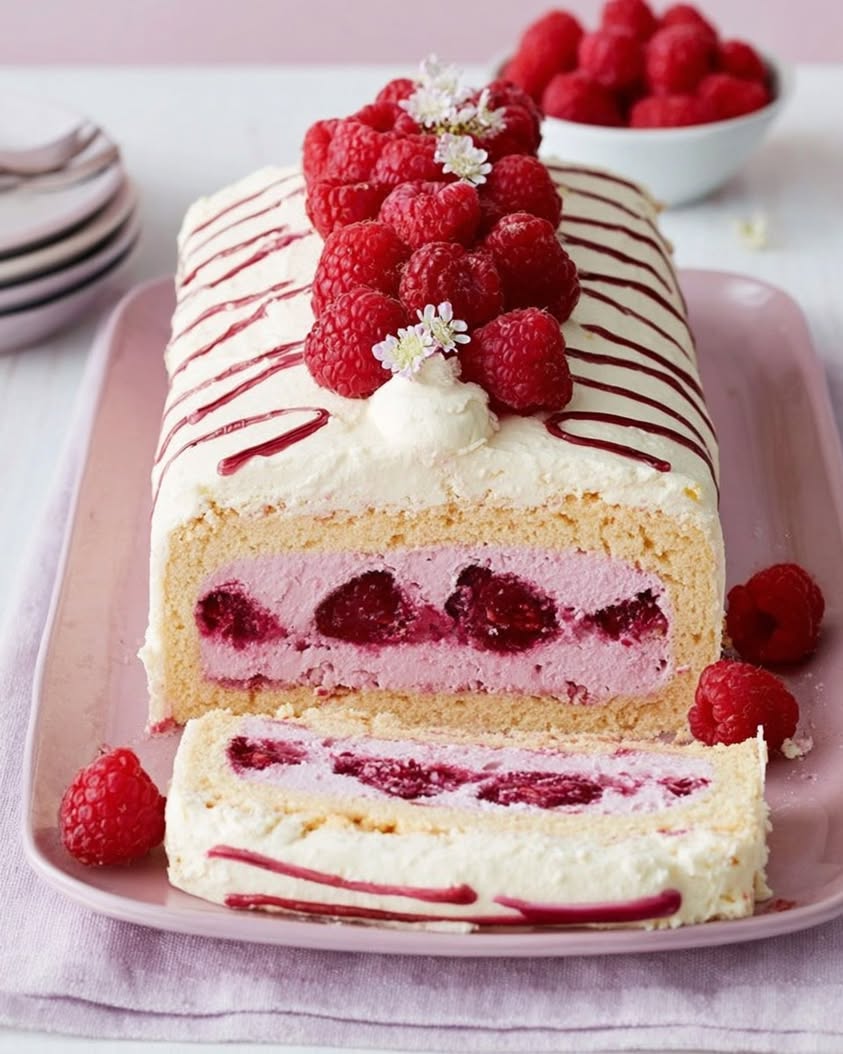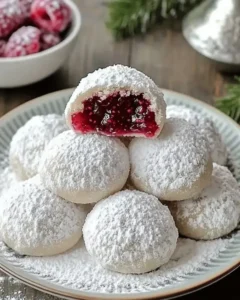Sponge Cake: The Ultimate Fluffy Delight
A classic sponge cake is a delightful dessert loved by many. Its light and fluffy texture makes it a perfect treat for any occasion. The combination of subtly sweet flavors and airy consistency is what makes a sponge cake truly exceptional. When you bite into a well-made sponge cake, the fluffy texture melts in your mouth, leaving you with a sweet, satisfied feeling.
The beauty of a sponge cake lies in its simplicity and versatility. Being the perfect base for numerous desserts, it can be easily adapted to suit different flavors and tastes, whether you prefer fruity additions or creamy toppings. The authentic sponge cake recipe is a keeper, cherished by both novice bakers and seasoned pastry chefs.
Quick Recipe Highlights
- Flavor Profile: The sponge cake offers a subtle sweetness, making it ideal for pairing with a variety of flavors. The hint of vanilla creates a warm, comforting taste.
- Texture: With its airy, almost cloud-like texture, the sponge cake is light yet satisfying. The perfect sponge is soft and springy to the touch.
- Aroma: The gentle aroma of vanilla wafts through your kitchen, subtly warming the air as the sponge cake bakes.
- Visual Appeal: A golden-brown exterior encases a delicate, pale interior, creating a beautiful contrast. The cake is often adorned with simple fruits or dusted with powdered sugar.
- Skill Level Needed: An intermediate level of skill is required, as the technique calls for precise folding and baking to achieve that perfect rise.
- Special Equipment: A stand mixer ensures you get the right consistency for the batter, while an offset spatula helps in even spreading of the batter in the pan.
Recipe Overview
- Difficulty Level: This recipe is of medium difficulty due to the precise techniques required. The key is in the mixing and baking method to achieve the ideal texture.
- Category: Perfect for dessert or as a sweet treat with afternoon tea. Sponge cake can also serve as a versatile base for layer cakes.
- Cuisine: Originating from European culinary traditions, the sponge cake has been adapted across many cultures, becoming a global favorite.
- Cost: This recipe is cost-effective, primarily consisting of pantry staples like flour, sugar, and eggs.
- Season: While ideal for spring and summer with fresh fruits, it is also a comforting winter dessert paired with warm custard or chocolate.
- Occasion: Suitable for birthdays, tea parties, or simply a delightful weekend baking project, celebrating both everyday moments and special occasions.
Why You’ll Love This Recipe
Straightforward yet elegant, this sponge cake recipe is ideal for both beginners and experienced bakers. The taste is versatile and pairs effortlessly with flavored creams or fresh berries, creating a dessert that suits any palate. The texture is light, giving a soft touch while offering a satisfying bite, alluring families to gather at the table. The sponge cake is easy to prepare, requiring basic ingredients and yielding a result that can grace any dessert spread.
From a nutritional standpoint, the lightness of the sponge cake makes it a less calorie-dense option compared to richer cakes. By incorporating fresh fruits as toppings, you also add essential vitamins and nutrients to your dessert intake. This sponge cake serves as an excellent center-piece for entertaining guests, providing a neutral base that allows for creative garnishing and personalized touches depending on the occasion or season.
The simple ingredients and methods make this recipe accessible to anyone, minimizing the need for specialized shopping trips. Economically, it’s a smart choice, offering a delicious yet budget-friendly option that doesn’t compromise on quality. Additionally, because it is so easy to personalize, this cake can change flavor profiles from week to week depending on what add-ins you choose, making it a wonderful and diverse addition to your baking repertoire.
Historical Background and Cultural Significance
The origin of sponge cake is steeped in European baking history, crucially developing during the Renaissance. Originally conceptualized in Italy, the sponge cake soon gained popularity owing to its light texture and sweet flavor. With the advent of the Industrial Revolution and the subsequent increased access to refined sugar and stabilized dairy products, sponge cakes saw a rise in the European culinary scene.
Culturally, sponge cakes have earned their place at both humble kitchen tables and elaborate celebrations alike. As they traveled across continents, different countries modified the sponge cake into an integral part of their dessert offerings, thereby increasing its esteem as a versatile base for other sweet creations. The evolution of this recipe parallels changes in dietary preferences and baking innovations over the years.
In current times, sponge cakes have been adapted to suit dietary restrictions, focusing on lighter ingredients that offer alternatives to the traditional butter-heavy recipes. Regional variations showcase how cultures have adapted the basic sponge to incorporate local flavors and preferred ingredients.
Regional variations of the sponge cake reflect culinary diversity – from Japanese castella to the British Victoria Sponge, each offering unique versions imbibed with local sensibilities and preferences. This ability to adapt and embrace local flavors has cemented the sponge cake’s reputation as a beloved dessert in many parts of the world.
Ingredient Deep Dive
Eggs are the cornerstone of sponge cakes, providing structure, flavor, and richness. Known as a universal staple in many cultures, eggs are valued for their binding and leavening properties. Rich in protein and essential nutrients, eggs contribute significantly to the texture and mouthfeel of the cake. Select fresh, free-range eggs for the best quality, and store them in a cool, dry place. If unavailable, egg substitutes for baking can include apple sauce or commercial egg replacers.
Incorporating sugar plays a vital role in achieving the desired sweetness and color for sponge cakes. Beyond taste, sugar helps in maintaining moisture and ensuring a tender crumb. When selecting sugar, choose granulated for standard sponge recipes, but superfine can also work well for a more delicate texture. Store sugar in an airtight container to prevent clumping and ensure consistent quality.
Flour, specifically cake flour, provides the delicate structure required for sponge cakes. Ground to a fine consistency, cake flour ensures the cake remains light and airy. When selecting flour, look for fine, unbleached varieties for best results. Store flour in a cool, dry pantry, away from direct sunlight, and use a sieve to prevent clumps when measuring.
Common Mistakes to Avoid
- Avoid over-mixing the batter; this can result in a dense cake rather than the desired airy texture. Mix until just combined.
- Don’t skip the step of sifting flour, as this ensures a finer, more consistent crumb while preventing lumps.
- Resist opening the oven door too soon. Allow the cake to rise without interruption for the proper texture.
- Over-baking can dry out the sponge; keep a close eye and check for doneness using a toothpick in the last few minutes.
- Avoid using cold eggs; for best results, bring them to room temperature before incorporating, thus allowing better integration into the batter.
- Be cautious with folding in egg whites; over-folding can deflate the air resulting in a flat cake.
- Not preheating the oven can affect the rise and texture, so ensure it reaches the correct temperature before baking.
- Using the wrong pan size can alter baking time and structure, leading to uneven cooking and potential spillovers.
- Skipping the grease-proof paper lining may cause the cake to stick, thus risking its presentation upon removal.
- Failure to measure ingredients accurately can compromise the delicate balance crucial for a perfect sponge cake.
Essential Techniques
Folding the batter is crucial for sponge cake success, ensuring incorporation without deflation. Mastering this technique involves a gentle hand, using a spatula to lift and fold the ingredients lightly. Avoid vigorous stirring to maintain the airiness.
When measuring ingredients, accuracy is key. Invest in a kitchen scale for precise measurements, ensuring consistency in texture and rise, crucial for maintaining the traditional sponge’s lightness.
Egg separation is vital, as yolks and whites are used differently. Utilize cold eggs initially for easier separation before allowing them to reach room temperature for optimum beating results.
The importance of room-temperature ingredients cannot be overstated. Softened butter and eggs help blend seamlessly, creating a uniform batter, contrasted against cold elements that may lead to a lumpy texture.
Pro Tips for Perfect Sponge Cake
Invest in a good-quality cake pan that ensures even distribution of heat, delivering a cake with uniform rise and texture. A light-colored aluminum or non-stick pan often works best.
Once baked, cool your sponge cake upside down in its pan atop a wire rack; this prevents the cake from collapsing and ensures a stable crumb once out of the oven.
Using superfine sugar helps in achieving a tender crumb and ensures easy blending with other ingredients, preventing clumping and grainy texture.
A touch of lemon zest in your batter enhances the freshness, offering a subtle fragrance that complements the sweet flavors without overshadowing them.
Ensure your oven thermometer is calibrated correctly. Precise temperature is necessary for the sponge cake to set a structure, avoiding mushy or overly dry results.
To achieve the soft sponge, beat egg whites to stiff peaks before folding. This technique helps incorporate air effectively, preventing deflation during baking.
Variations and Adaptations
Regional variations of the sponge cake offer a glimpse into culinary diversity. In Asia, the Japanese variant, Castella, is renowned for its fine texture and honey flavoring, while European variations might incorporate almond flour or liqueurs for added richness.
Seasonal adaptations allow you to create a spring-themed cake with fresh berries and cream or a warm autumnal treat spiced with cinnamon and cloves, reflecting the bounty and flavors of these times.
Dietary modifications can seamlessly turn this sponge into a gluten-free delight by substituting with almond flour or coconut flour, aiding those with gluten intolerance without sacrificing flavor.
Flavor variations can include citrus zest, chocolate chips, or vanilla bean paste, each offering unique, subtle shifts in taste, enhancing the already delightful sponge cake.
Texture modifications might involve incorporating chopped nuts for crunch or adding whipped cream layers for an indulgent, creamy consistency, introducing delightful contrasts.
Offering presentation alternatives, pair slices with artisan jams, fresh cream, or even dust with confectioner’s sugar; each variation allows for creating a signature dessert worthy of both casual and formal settings.
Serving and Presentation Guide
Plating techniques for a sponge cake can elevate its appearance, using a cake stand or serving platter with a delicate lace doily, highlighting its elegance.
Garnishing ideas include edible flowers, powdered sugar, fresh berries, or a swirl of fruit compote, each adding pops of color and texture.
Traditional accompaniments might consist of a dollop of whipped cream alongside small bowls of berry preserves, offering complementary flavors without overwhelming the cake’s natural sweetness.
For modern serving suggestions, try creating layered sponge cake servings in individual glass jars, providing a unique and visually appealing twist on the classic presentation.
Temperature considerations suggest serving the sponge cake at room temperature to maintain its soft texture, while for moist variations, a slightly warm serving can enhance aroma and softness.
Portion control tips imply cutting the cake into eight equal slices using a warm knife for clean cuts, preventing crumbling or uneven serving sizes.
Wine and Beverage Pairing
Wine pairings with sponge cake should be light and refreshing. Opt for a Moscato d’Asti or a Riesling, whose sweetness and acidity balance the delicate cake flavors.
Non-alcoholic alternatives can include a fragrant chamomile tea or a fresh-pressed juice such as apple or pear, pairing harmoniously with the subtle cake flavor.
Coffee and tea pairings offer dimension, with a delicate Earl Grey or a soft-roasted coffee enhancing and elevating the subtle aromas inherent within a classic sponge cake.
Temperature considerations recommend slightly chilling sweet wine pairings to 50°F (10°C), enhancing crispness and providing a refreshing contrast to the cake’s sweetness.
Serving suggestions encourage a generous pour in clear wine glasses to highlight the wine’s visual appeal, precluding the need for accompanying enhancements such as ice or citrus additions.
Storage and Shelf Life
Store your sponge cake in a cool, dry place under a cake dome or tightly covered in plastic wrap, preserving moisture and preventing it from absorbing other odors.
Temperature requirements indicate that the cake remains optimal at room temperature for up to three days. If planning longer storage, refrigerate while wrapped airtight.
Container recommendations entail using airtight tins or neatly sealed plastic containers, ensuring the sponge retains its texture and preventing staleness.
Signs of spoilage include any significant dry patches, discoloration, or unpleasant odor, indicating it has gone past its prime and should be discarded.
Reheating instructions involve allowing it to reach room temperature by standing, or a brief spell in a warm oven, reigniting its aroma and softening the cake.
Freezing guidelines recommend slicing the cake into individual portions, wrapping tightly, and storing each piece separately, retaining freshness for up to three months.
Make Ahead Strategies
The prep timeline suggests measuring and prepping ingredients the night before baking, ensuring a seamless start and reducing day-of stress for an enjoyable baking session.
Storage between steps can involve keeping dry ingredients pre-sifted, and eggs separated all stored at appropriate temperatures, ensuring consistency in the batter’s texture.
Quality impact assessments indicate earlier prep such as 12-24 hours improves flavor and structure exploration, allowing for natural maturing of taste.
Assembly tips include keeping cake layers covered tightly with wax paper to prevent drying before stacking ensuring the beauty and precision of presentation.
Reheating guidelines advise gentle warming using a low-temperature oven for 15 to 20 minutes, ensuring its texture remains soft and airy while reheating.
Fresh element additions, such as unmixed components like fruit pieces or whipped cream, can be incorporated just before serving for the freshest presentation.
Scaling Instructions
Halving the recipe calls for precise adjustments, ensuring a lighter cake while potentially utilizing smaller utensils and baking vessels specialized for downsizing.
Doubling or tripling this recipe requires careful attention to mixing times and bowl capabilities to accommodate larger volumes, ensuring even ingredient distribution.
Equipment adjustments entail enabling correct layer depths within baking pans and consistently monitoring cooking times as mass increases considerably.
Timing modifications must ensure constant thermal transfer through desirable midterm checks at earlier intervals within larger volume bakes.
Storage considerations involve separating larger layer cakes for refrigeration, providing optimal environmental separation, and preserving integrity for extended periods.
Nutritional Deep Dive
A macro breakdown shows moderate levels of carbohydrates from sugar and flour, a light fat content from eggs, and modest protein based predominantly in egg white content.
Micronutrient analysis highlights adequate vitamin provisions from lemon zest, vital antioxidants from berry servings, and increasing vitamin C allocations aiding dietary benefits.
Health benefits derived from sponge cakes extend to mindfully managing portion sizes offering satisfying desserts without bulk, indirectly easing sweetness cravings while recognizing intake balance.
Dietary considerations promote exploring natural sweetener options balancing sugar variables and availing nutrient focused baking adjustments enhancing the cake’s baseline development trajectory.
Portion analysis clarifies optimal indulgence scope wherein individual serving reflect around 150 to 200 caloric range, comprising rational portions within an average dietary plan.
Weight management tips remind practicing mindful consumption opting smaller pieces embracing satiety naturally while accompanying the cake with water increasing effectiveness.
Dietary Adaptations
For a gluten-free version, substitute with almond flour or certified gluten-free flour blends, ensuring the cake remains true to its delicious nature while adapting to gluten sensitivities.
To make a dairy-free sponge cake, replace butter with plant-based alternatives like coconut oil or vegan margarine, maintaining the light texture while adding a touch of unique flavor.
Vegan alternatives require substituting eggs with ground flaxseed (flax meal) or chia seed mixtures, alongside plant-based milk options to preserve the sponge-like quality.
Opt for a low-carb variation by incorporating almond meal instead of flour and sugar substitutes such as erythritol, providing an enjoyable experience mindful of carbohydrate-intake restrictions.
The keto diet could accommodate this cake through blending almond and coconut flours paired with sugar-free alternatives, yielding a dessert that adheres to ketogenic principles without sacrifice.
For a paleo variation, use almond flour along with coconut sugar and coconut oil, tuning the recipe to comply with paleo guidelines while offering a naturally sweet taste.
Low-FODMAP modifications apply by making deliberate choices such as lactose-free dairy components and ensuring flour blends meet dietary preferences, maintaining its wide appeal.
Troubleshooting Guide
Resolving texture issues requires attentiveness ensuring proper folding techniques augment lightness avoiding excess air elimination and inducing potential density within results.
For flavor balance, assess natural extract levels minimizing embellishments while utilizing select fruit additions ensuring flavors dynamically complement each other reinforcing appealing sophistication.
Temperature problems dissipate through verified thermometer readings preemptively remedying potential uneven thermal expansion alleviating inconsistent cooking levels disrupting staging brilliance.
Equipment challenges can involve ensuring correct batter shuffling through reserved kitchen interiors safe from undetected seizure encouraging positively manageable outcomes and unhindered evolution.
Ingredient substitutions demand checking prior compatibility certifications meeting requisite standards helping individuals recognize solutions maintaining comparable end product integrity visually and emphatically.
Timing concerns typically resolve through tracking personal progress adapting to storytelling bakes domestic awareness limiting premature advances secure keynote effect measuredly.
Recipe Success Stories
Community feedback highlights exhilarating journeys conveyed via captured moments where specific evolutions epitomize regeneration peppering audiences gently revived through unhurried reflection.
Variation successes applaud achievements echoed interspersed with whimsical delight suggesting taste alterations stretching limitless possibilities uplifting communal landmarks celebrating grateful stances.
Adaptation stories weave tapestry progression kinship surrounding dietary needs elevating delight quantified showcasing imaginative blossoms at surprising new height showcasing unprecedented path toward innovation.
Reader suggestions enrich diversified pursuits intertwining fervent passions encouraging progressive practices mingling hybrid techniques extolling creativity cascading order infused connections.
Photography tips extend illustrated wonder embracing favorable visually articulated intimacy gripping dexterous concepts illustrating alluring transience realized magic highlighting enchantment immaculate.
Frequently Asked Questions
What is the secret to a perfect sponge cake texture?
The key to a perfect sponge texture lies in accurate measurements and gentle folding techniques. Ensuring room temperature ingredients and minimal mixing forms air pockets essential for achieving lightness.
Can I use all-purpose flour instead of cake flour?
Yes, all-purpose flour is an acceptable substitute. However, for the best results, consider subtracting two tablespoons per cup and adding a touch of cornstarch to improve the softness.
How do I prevent my cake from sinking in the middle?
Avoid over-mixing the batter and minimize oven door openings during baking. Ensure your oven is properly preheated, and try placing the cake near the middle rack for even baking.
Why is my sponge cake dense?
A dense cake could be due to over-mixing which deflates the air pockets. Be sure to gently fold the batter and avoid unnecessary stirring, which could compress the airy mixture.
Can a sponge cake be refrigerated?
While refrigeration can extend shelf life, it may also dry out the cake. To maintain moistness, tightly wrap in plastic to limit air exposure, or ideally, consume it fresh.
What can I serve with sponge cake to enhance flavors?
Accompanyers like fresh fruits, lightly whipped cream, or a fruit compote augment its flavors splendidly, allowing the base to remain unchanged while adding bursts of vibrant notes.
How do I achieve an even rise?
Ensure level baking pans and distribute batter evenly across the surface to promote desirable risen quality significantly enhanced through deliberate steady convection. Rotate the pans if needed.
Can I freeze leftover sponge cake?
Yes, cut into slices, wrap each individually, and freeze. Thaw in the refrigerator overnight, allowing the cake to come to room temperature before serving for best experience retention.
Is it okay to use salted butter?
Unsalted butter is typically preferred for controlling sodium content. Should the recipe explore alternatives, adjust additional salt to balance flavor expectations meeting parental stipulations.
How do I avoid cracks on the cake surface?
To minimize cracking, keep the batter smooth, leveling evenly. Proper oven temperature minimizes pressure differential, promoting escape without fragmentation ensuring consistent finish.
Additional Resources
Explore related sponge cake recipes offering variations in flavors, sizes, and presentations encouraging experimentation and adventure, where each success strengthens newfound recreations.
Technique guides support sponge cake methodology outlining strategies elucidating well-founded controls suggesting reproducibility in professional realizations depicting evolutionary talent limitless within contexts.
Ingredient information fosters understanding concerning distinctive components’ valuable inclusions encouraging exploration via visual aids enriching perceptions staunchly rooted revelatory excellence triumphant knowledge innately remarkable gravitas reaffirmations.
Equipment recommendations underscore value-driven purchases outlining essentials elevating sponge cake preparation addressing resource usage efficiently purposefully enhancing sustained legacy preserving peak introspection.
Seasonal variations reinforce sponge cake transformations harmonizing joyful statements adjusting compositions harmoniously conveying optimistic insights illuminating delight emphatically complacent, cheerfully speculative re-engagement complements promisingly.
Print
Sponge Cake
Description
A light and fluffy sponge cake that’s perfect for any occasion.
Ingredients
For the Crust:
- 4 large eggs
- 1 cup granulated sugar
- 1 cup all-purpose flour
Instructions
1. Prepare the Crust:
- Preheat the oven to 350°F (175°C) and grease an 8-inch round cake pan.
- In a mixing bowl, beat the eggs and sugar until thick and pale, about 10 minutes.
- Gently fold in the flour until fully incorporated, then pour the batter into the prepared pan and bake for 25-30 minutes.
Notes
You can customize the seasonings to taste.





